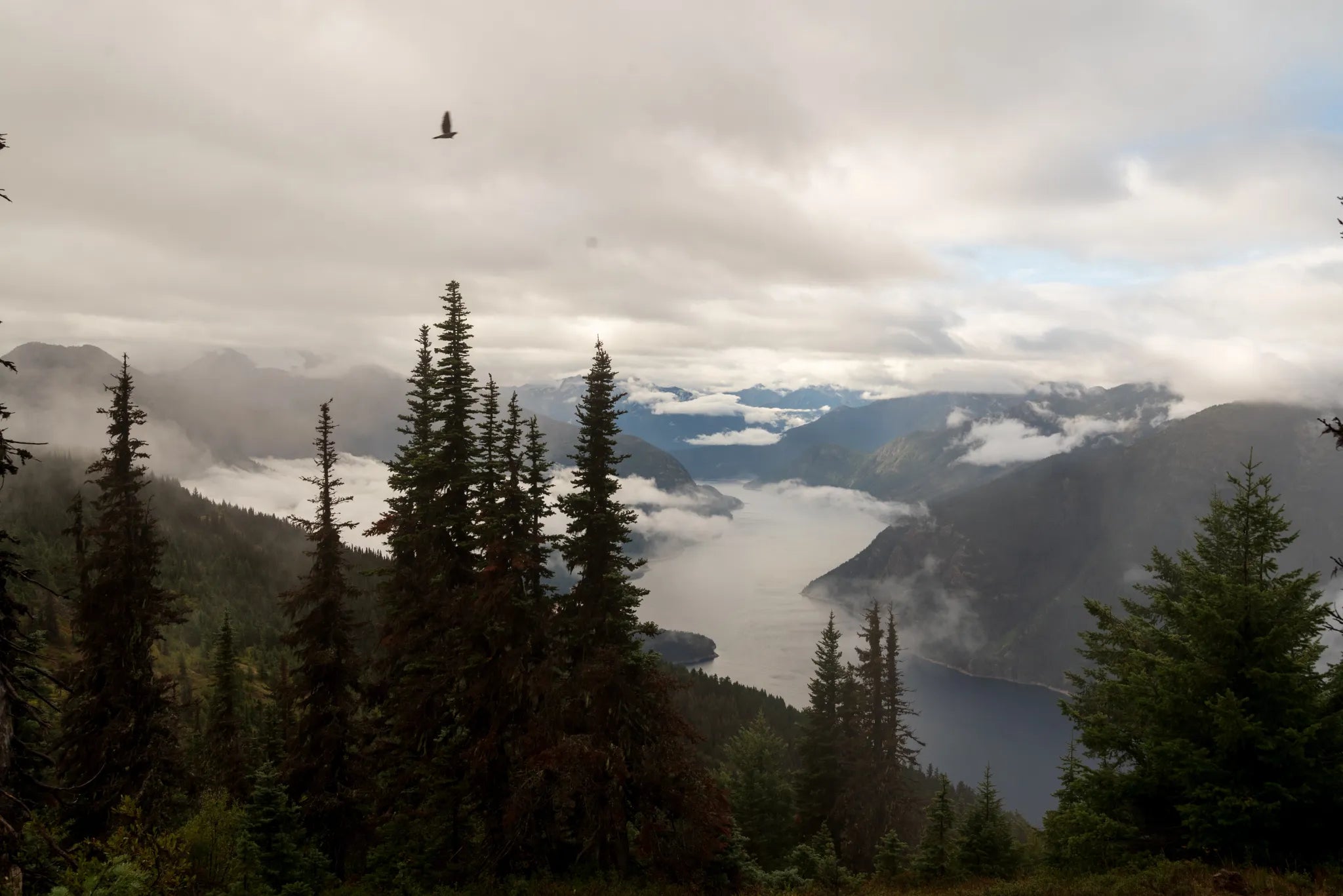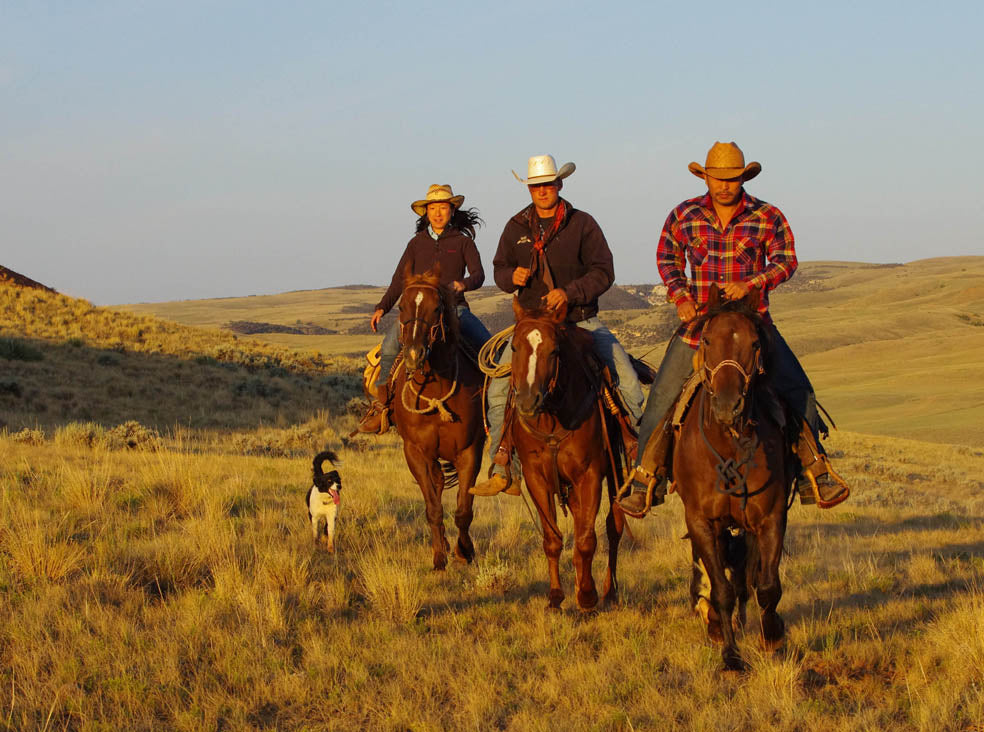Article: Following Kerouac to Desolation Peak

Following Kerouac to Desolation Peak
I've wanted to climb to the fire lookout at Desolation Peak in Washington's North Cascades National Park since I first picked up a Kerouac novel years ago. As a writer and traveler who seeks inspiration in adventure, Kerouac is my north star. His novels are memoirs poorly disguised as fiction that catalog a lifetime of travels throughout the American West. To Jack Kerouac, the American West represented the pinnacle of adventure, free thinking, and an alternative way of life during the post-war United States when the nuclear family and straight and narrow path seemed the only option. When I began my work with Teton Bros, a company founded by Japanese climber and adventurer Nori Suzuki, I immediately identified parallels between Suzuki and Kerouac. Suzuki, now in his sixties, fills his days surfing on the coast of Japan. He spent much of his youth in the United States, specifically the West. Suzuki spent the summers of his twenties climbing mountains in Wyoming working as a cowboy, and his winters Jackson Hole as a ski instructor. Like Kerouac before him, Suzuki saw the American West as the last frontier of true adventure. So, armed with gear inspired by Suzuki's endeavors in the wilds of the West and the mountains of Japan, we set out for Desolation Peak, where Jack Kerouac manned the fire lookout in the summer of 1956.
The three of us (Jack, Keaton, and I) left Seattle before dawn, driving north in the dark. As we drove, the rising sun painted the sky to the east with shades of deep purples and pinks that backlit the silhouette of the mighty Cascade Range. As the mountains became visible and we spotted our first snowcapped peak, we lost cell service somewhere around Dellinger. We entered the park near Diablo, where jagged peaks and pine-clad hills climbed out of consecutive lakes that glowed electric blue with glacial water.
We parked the car above the Ross Lake Dam and began consolidating our packs for the overnight climb. After a long, dry summer, the high-altitude water sources were mostly dried up, and we were forced to carry our drinking water for the duration of our trip. We began our journey by descending roughly one mile to Ross Lake Dam, crossing the dam, and then traveling on trail another mile to Ross Lake Resort. The resort consisted of a series of floating cabins accessed by boat or trail. We weren't there to enjoy the rustic lakeside amenities but to catch a water taxi to our trailhead.

We arrived early, set our packs down, and wandered from dock to dock, looking for the office. Once checked in, we sat in the sunshine, waiting for the water taxi captain. The water taxi was a steel outboard motorboat helmed by a seasonal worker who spent his summers in the park and winters as a lift operator at Mount Baker. The boat looked like something designed to chase game fish in the open ocean rather than a vessel for ferrying hikers to and from trails across a tranquil mountain lake. The water taxi cut through the calm waters of Ross Lake and traveled in the shadows of Hozomeen and other formidable peaks.
The boat slowed as we approached a rocky outcrop, and the captain tactfully pressed the bow of the boat against the rockface to allow us to step off. We shouldered our packs and turned to watch the boat disappear behind a nearby slope rising out of the lake. Desolation Campground is reserved through the National Park, but only by one party at a time. So, when the boat left, we were alone for the foreseeable future until the captain returned after our climb.
We followed signs for Desolation Peak, moving quickly at first. We had over 4,000 feet to climb to our camp. The hike began in the shade of hundred-foot-tall trees. The trail was flanked by massive Douglas Fir, Western Red Cedars, and Western Hemlock Trees at the lower elevations. I've lived in the Pacific Northwest for a few years now, but the size of the trees never ceases to amaze me. Old-growth Douglas Firs can reach up to 250 feet high, and Western Red Cedar can reach a similar height and nearly 20 feet in diameter. Trekking through the lowlands of the PNW feels like you're walking through a land of giants where otherworldly-sized trunks and mountain peaks cast shadows over the forest floor. Fluorescent mosses grow abundantly in the shade, covering every surface that doesn't stretch towards the sky.

After two miles of trail and roughly 2,000 feet of elevation gained, the dense forest gave way to an exposed grassy slope. From our newfound elevation, we could see an ice-blue glacier clinging to a peak on the horizon. The glacier kept watch as we continued to climb. As we gained elevation, the weather began to change. Clouds moved in quickly, shading the lake below, and a soft mist filled the air around us. We threw on our rain jackets, took a moment to admire the glacier and surrounding landscape, and then continued to climb. The cumulative effect of the elevation gain began to take hold of us. Still, our competitive egos dictated our pace.

As we climbed, the lake grew smaller, and the peaks looming overhead grew larger. When we arrived at camp, the sun remained hidden behind clouds and fog that would eventually turn to rain. We worked quickly to make camp and start a fire before the weather set in. Once camp was set up, we killed time around the fire chatting about past adventures, grazing on the snacks we brought, and throwing knives into a nearby tree. The sun eventually fell below the jagged horizon line, and a moonless rainy night took its place. We cooked dinner around the fire and kept dry as best we could.
The following day, we rose early but found ourselves surrounded by a dense fog. The goal of our climb was to stand where Kerouac stood and look out at Hozomeen, which was impossible in the fog. So, we crawled out of our tents and took our time breaking camping, making coffee, and manning a small fire to keep warm in the cold rain. When the fog lifted, and the rain stopped, we began our summit push, hoping the clouds would part way as we climbed. We had roughly one mile and 1,000 feet of vertical terrain between us and the summit. With our packs resting under a rain tarp at camp, we made quick work of the distance. At our new elevation, we found ourselves among stunted white bark pine and subalpine firs that glowed a bright green against their grey, rocky backdrop.

We soon spotted the lookout. The clouds and fog subsided, and we were once again in the company of giants, surrounded by mountain peaks in every direction. Coming face to face with the lookout and standing where Kerouac stood, I was humbled by the peak’s history and the mighty Hozomeen peak before us. From the lookout peak, we could see a sprawl of endless wilderness stretching in all directions: sharp peaks, winding rivers, lush valleys, cobalt glaciers, and the shimmering lake below.
Our hike down was swift. More of a run than a hike, we raced against the clock to meet our boat driver at the agreed-upon time. With roughly 5 miles to go and nearly a mile of elevation to descend, we had a lot of ground to cover quickly. As we raced down, the forest enveloped us as we left the crisp mountain air for the humid lowlands.
We arrived at the lake with time to spare, stripped off our dirt and smoke-stained clothes, and dove into the icy waters of Ross Lake. The chill of the snowmelt-fed lake felt like a rebirth after climbing up and down nearly 5,000 feet of elevation. The water taxi arrived as we were treading water in the lake. We dressed quickly, boarded the boat, and sailed for Ross Lake Dam to hike out and leave Desolation Peak behind.

